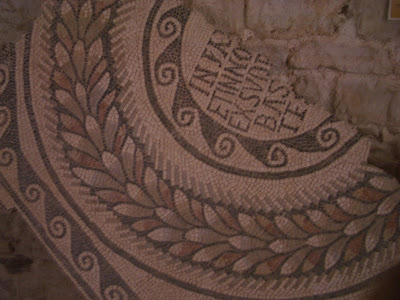
Poreč (in italian Parenzo) is a little touristic town at the croatian seaside that became a city already since the reign of Emperor Augustus in the 1st century. With the fall of the Roman empire in 476, different rulers and powers governed. First, it was held by the Ostrogoths and after 539 was part of the Byzantine Empire. From 788 it was ruled by the Franks. A short independence period followed in the 12th century and later it was ruled by the patriarchs of Aquileia. In 1267 Porec became the first Istrian city that chose to become part of Venice, whose rule lasted for more than five centuries. During this period the city several palaces, squares and religious buildings in Venetian style were built. After the fall of the Venetian Republic Porec came under the sovereignty of the Austrian Empire. Between 1797 and 1814, Porec was part of the Napoleonic Illyrian Provinces and therefore nominally part of the French Empire. After this short period it returned to the Austro-Hungarian Empire.

In 1861 it became the capital of Istria, a center of shipbuilding industry and a popular tourist resort for the Austrian aristocracy. After 1918, it was the annexed to the kingdom of Italy. In 1943, it became possession of Yugoslavia and officially assumed the Croat name of Poreč; the original Italian population was forced to leave the city and it was substituted with slavic people.

The city plan still shows the ancient Roman Castrum structure. The main streets are Decumanus and Cardo Maximus, still preserved in their original ancient forms. Marafor is a Roman square with two temples attached. One of them, erected in the first century AD, is dedicated to the Roman god Neptune. A few houses from the Romanesque period have been preserved and beautiful Venetian Gothic palaces can be seen here. Originally a Gothic Franciscan church built in the 13th century, the 'Dieta Istriana' hall was remodeled in the Baroque style in the 18th century.

The Euphrasian Basilica, rebuilt in the 6th century under the Byzantine Empire and bishop Euphrasius, is the most important historical site in Poreč. It is a protected World Heritage Site, so designated by UNESCO in 1997.
 The town is sure worth a stopover for taking some pictures and relax on the beach. Since it's very touristy there are plenty of accomodations and restaurants (with its pro's and con's).
The town is sure worth a stopover for taking some pictures and relax on the beach. Since it's very touristy there are plenty of accomodations and restaurants (with its pro's and con's).
.JPG)

.JPG)

1 comment:
bello sto parenzo..
mi fa venire in mente che in italia abbiamo una danza che si chiama la paranza.. chissè se viene da li !
Post a Comment